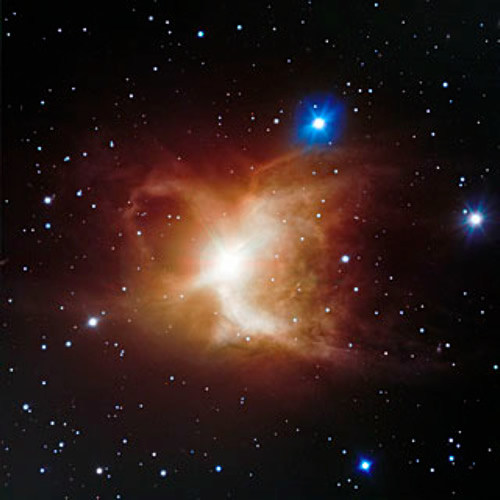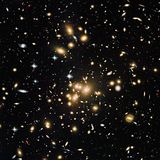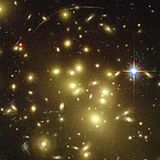
Located in the southern constellation of Carina, IC 2220, better known as the "Toby Jug Nebula," pours its nebulous contents into space some 1,200 light years from Earth. Brought to light by a red giant star cataloged as HD 65750, this cloud of gas and dust was recently the subject of an observation done by ESO's Very Large Telescope (VLT), the most advanced ground-based system of optical instruments in the world today.
Deep within the folds, arcs and curls of the nebula, is the progenitor star - one which is about five times larger than our own Sun. Even though it is a relatively young star, around 50 million years old, it has aged fast. Instead of peacefully burning, it is spewing its mass into surrounding space and this material is forming a cloud of gas and dust around it as it cools. It is "star stuff"... dust which is made up of fine grains of elements like carbon, titanium oxide and calcium oxide.

IC 2220, Toby Jug Nebula. Credit: ESO
Yet that's not all. Thanks to infrared imaging, the VLT has also identified silicon dioxide, the probable compound responsible for reflecting the embedded star's light.
Spanning across about a light year of space, the Toby Jug Nebula is much like looking into a shaft of sunlight as seen here on Earth. As you gaze at it, you see tiny motes of dust spinning and reflecting the light. IC 2220 works on much the same principle. The star releases huge amounts of material in an almost symmetrical pattern and creates a structure we can identify.
Since this phase of stellar life is short, these objects are not only beautiful, but rare, too. Red giant stars are very near the end of their lifetimes - their storehouses of hydrogen nearly depleted. Once gone, the star no longer has fuel to burn and its atmosphere begins to swell to enormous proportions. Stars like HD 65750 burn a shell of helium outside a carbon-oxygen core, sometimes accompanied by a hydrogen shell closer to the star's surface.
Although you and I won't be around when it happens, our Sun may one day meet a similar fate. Billions of years from now, Sol will run out of gas and begin to inflate. Its proportions will encompass the current orbit of Earth and it will swallow all of the inner planets as it expands. Even if mankind survives that long, the Earth would not. If our Sun became a red giant, the massive increase in radiation and the intense solar winds which accompany stellar inflation would devastate our planet. All life would cease to exist, our oceans would evaporate and Earth would melt.
However, don't worry. Unlike our Sun, stars with high mass cycle through their lives much more quickly than lighter ones. Their timelines are measured in billions, rather than millions, of years. This gives us plenty of generations of astronomers to wonder over distant space creations, and plenty of time to drink from the Toby Jug Nebula.
About Tammy Plotner - Tammy is a professional astronomy author, President Emeritus of Warren Rupp Observatory and retired Astronomical League Executive Secretary. She's received a vast number of astronomy achievement and observing awards, including the Great Lakes Astronomy Achievement Award, RG Wright Service Award and the first woman astronomer to achieve Comet Hunter's Gold Status.



















